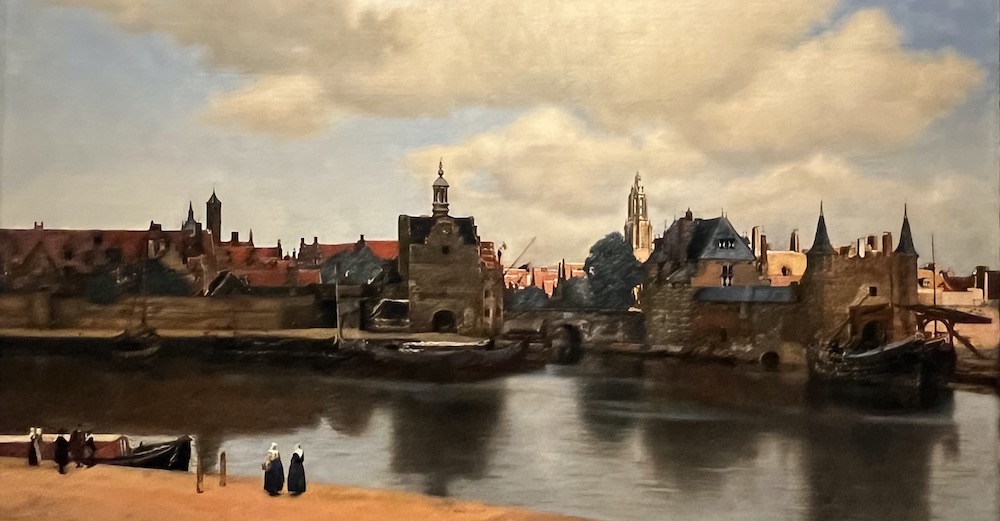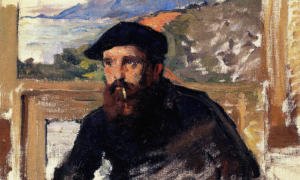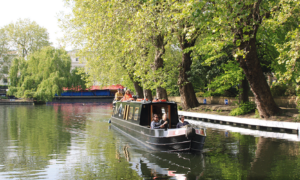(Editor’s note: This post detailing major art exhibitions across Europe will be updated through 2023.)
The art world has never been crazier, with billionaire collectors driving prices into the tens of millions, and art thieves stealing anything that’s not nailed down (and a few things that are.) So, 2023 already is shaping up to be a big, big year for the arts in Europe, especially in our HQ country of the Netherlands.
The Rijksmuseum in Amsterdam just announced a huge Vermeer show that opens 10 February and runs through 10 June. This is a big freakin’ deal in that museums in the United States and Europe are lending their Vermeers to the Rijks for this historic assemblage of the Delft native’s works.
This is such big news that multiple media outlets, including the Guardian and the New York Times, are touting it as the show of the year, with in-depth posts. Twenty-eight of the artists’ total oeuvre of an estimated 35 paintings will be in the exhibit. (Curators suspect there are another 15 or so unattributed canvasses out there. If you have one in your attic, let us know and we’ll be right over with cash.)
As most artniks know, Vermeer was a nobody. He wasn’t famous in his lifetime like Rembrandt. He never achieved the significant wealth and social standing of, say, a Van Dyck. But if you’ve ever seen his painting of Delft (see the featured photo above), with its ingenious interplay of light, or “Girl with a Pearl Earring,” you get why a lot of critics rank him as the best of the Golden Age Dutch/Flemish Masters.
In a great post by Simon Jenkins at the Guardian, it’s clear Vermeer was also a techie, working with microscope and lens innovator Antonie van Leeuwenhoek to project images on the canvas.
Tickets are 30 euros per person (10 euros if you have a national museum card) and you can get yours here. (The show is sold out, but you might be able to get last-minute tickets at the Rijksmuseum office, or through TicketSwap.)
A lot of friends flew in from the United States just for this show. We just got back and will have a full post.
Gianni Versace Retrospective at the Groningen Museum
Now thru 7 May
Back in the day, a friend came back from Miami told my wife and me about meeting some clothing manufacturer named “Johnny something.” Our celebrity immune friend Mark had gone to a crazy party at a lavish mansion but didn’t know who the person was or quite how he ended up there. Cheryl and I looked at each other and shrugged: “Most of time clothing manufacturers are kind of anonymous.” Mark thinks for a second and says, “Well, he’s pretty famous. He’s Italian and there were a lot of fashion models there.”
Duh, Gianni Versace, who was murdered just a few weeks after Mark’s visit.
Now, you can experience what Mark experienced – the extravagant designs and life of one of the most famous designers of the 20th century. The Groninger Museum has a Gianni Versace Retrospective through 7 May.
The retrospective features apparel, accessories, fabrics, drawings, interior designs, and footage of Versace’s legendary shows from his glory days between 1989 and his death in 1997, according to the museum website. The designer made stars out of Naomi Campbell, Claudia Schiffer and Cindy Crawford.
You can see all that and more in Groningen, which is about a two-hour drive north of Amsterdam.
Tickets are 20 euros for adults, and you can get them here.
“Chagall, Paris – New York,” Atelier des Lumières in Paris
Now through 7 January 2024
This immersive exhibition is devoted to one of our favorite artists, who worked in multiple formats including stained glass at churches, synagogs and cathedrals in Europe and Israel.
Was a Chagall a religious artist? A Jewish artist? A French artist? A Russian artist? A fabulist? Was he an avant-garde experimental artist? A naive artist?
Yes.
“Chagall, Paris- New York” explores the two crucial stages of his career, the time spent first in France in the 1910s and 1920s, then to New York in the 1940s, then back to Paris in the late 1940s till his death in 1985.
To be clear, this show does not have actual paintings, but Chagall’s work is projected onto walls, combined with music, to place his artistic life on a continuum. You can get tickets here for 16 euros. Atelier des Lumières (Studio of lights) is in the 11th arrondissement.
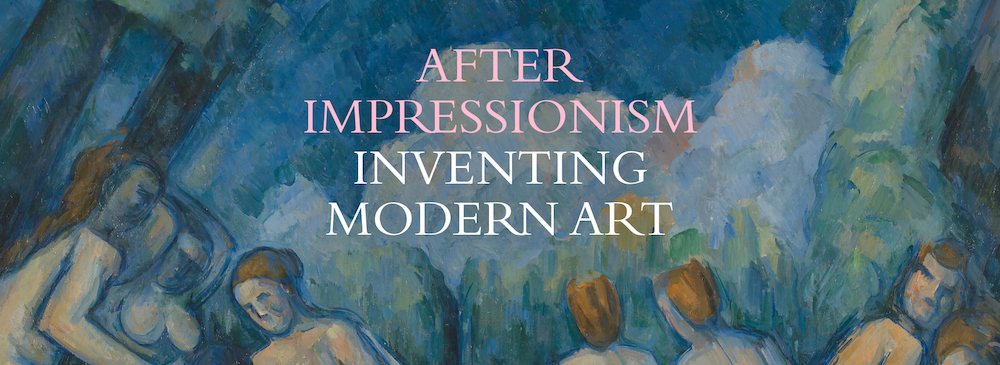
“After Impressionism: Inventing Modern Art” at The National Gallery in London
25 March to 13 August
This is another biggie, a major exhibition at London’s National Gallery of more than 100 paintings and sculptures created between the late 1800s and the beginning of World War I. This exhibition focuses on three giants of the era – Paul Cézanne, Vincent van Gogh and Paul Gauguin – and their influences on younger French artists, on their peers and on artists across Europe, according to the National Gallery website. The show includes works by Cezanne, Van Gogh, Rodin, Picasso, Matisse, Klimt, Kollwitz, Delaunay, Kandinsky and Mondrian.
This is a little different than the other events/exhibitions/shows on this list in that it’s both an industry gathering and an event for the public. And it’s spread out at multiple showrooms and exhibition spaces across Stockholm.
Like the Vermeer show above, this exhibition is made possible by loans from museums and private collections around the world. Lending collections include the Museum of Modern Art, New York; Musée d’Orsay, Paris; Art Institute of Chicago; Musée Rodin, Paris; National Galleries of Scotland, Edinburgh; Museu nacional d’arte de Catalunya, Barcelona; Tate; and Wadsworth Atheneum Museum of Art, Hartford, Connecticut.
So yeah, assembling this show (and let’s just say it … insuring it) was a major undertaking.
Tickets go on sale 15 February.

Manet/Degas, Museé d’Orsay
28 March to 23 July
Another big 2023 show at Museé D’Orsay. Degas and Manet are sort of the yin and yang of Impressionism; two painters from affluent yet markedly different backgrounds, and who were friends … well, at least until Degas famously painted Manet’s wife.
As rivals, they hung out at the same places with the same set and painted some of the same themes, but their careers and legacies diverged. Men shaped by an era of war and social upheaval, and whose works are stylistically different, yet are streams feeding the same river.
Or as the museum copywriter puts it:
By bringing Manet and Degas together in the light of their contrasts, and showing how much they defined each other by differentiating themselves, this exhibition, rich with masterpieces never before brought together and an unprecedented partnership, forces us to take a new look at the ephemeral bond and lasting rivalry of two giants.
So, yeah, this has the makings of yet another memorable show.
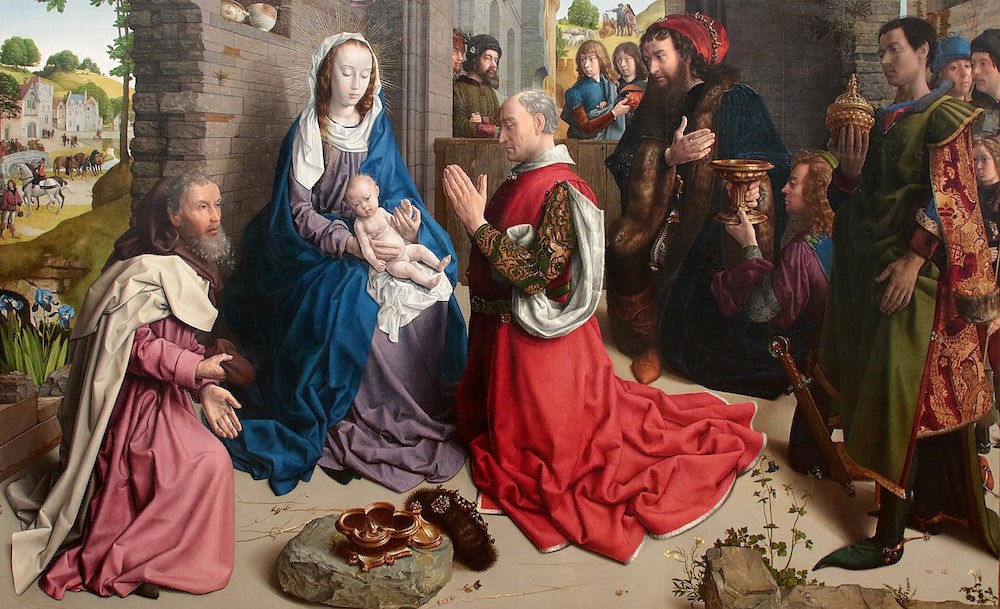
Hugo van der Goes: Between Pain and Bliss, Gemäldegalerie, Berlin
31 March thru 16 July
You likely never heard of Hugo van der Goes, but you’ve seen echoes of his style in the works of the Italian Renaissance through Jan van Eyck and the Dutch masters. His earlier works, such as “Adoration of the Kings,” are hyper-realistic at a time (the 15th century) when painters were cloaking their religious subjects in heavenly hagiography. For a guy working in Flanders in 1470, his paintings are throughly modern, wildly ahead of their time.
For example, in art classes, they teach you to look at the hands because hands are so devilishly difficult to render accurately. Hugo has the hands – supple, proportionate and mortal at a time when other artists were painting misshapen messes.
Van der Goes worked on a cathedral-scale canvas, so there haven’t been exhibitions pulling together his works. Now there is. “Between Pain and Bliss” includes 12 of the 14 works attributed to him. And in case you’re wondering about that title, van der Goes is the archetype for the “mad genius” dropping out of a successful career as painter to enter a monastery, where he was overcome by mental illness. You can sort of see that in his oeuvre, which grows steadily darker.
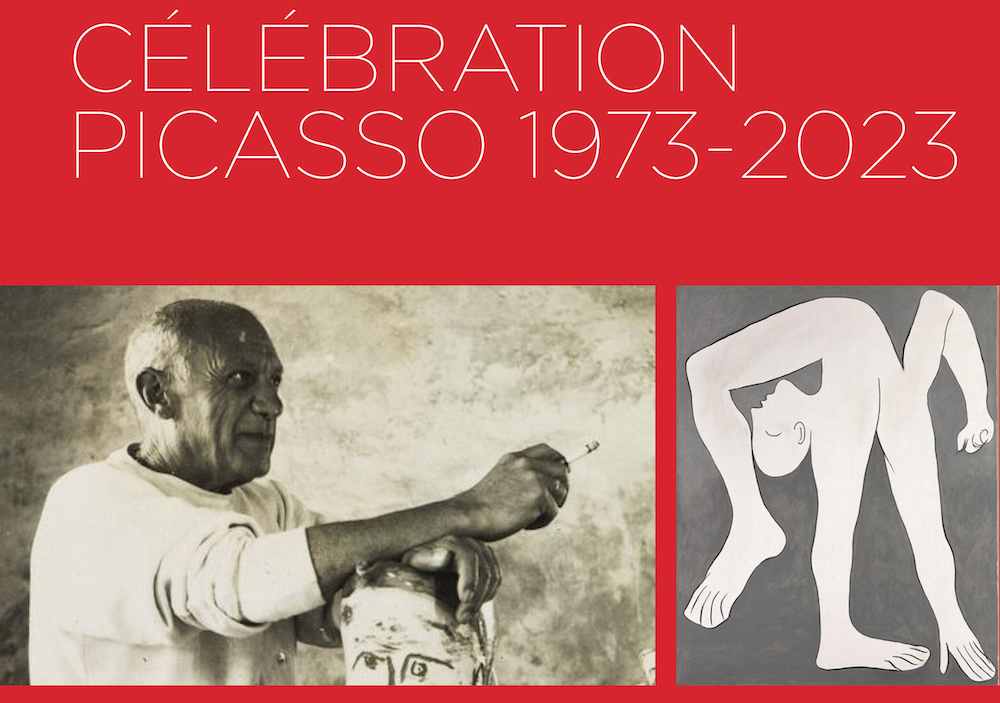
Picasso Celebration 1973 to 2023
Various locations across Europe
9 April marks the 50th year since Picasso died in Mougins in the South of France. Multiple museums in Switzerland, Spain and France are marking the event with special exhibitions, and there other events across the globe … at least 50 in total.
Here’s just a partial list:
• Now thru 6 August
“Picasso celebration, the collection takes on colour! Under the artistic direction of Paul Smith“
Musée national Picasso-Paris
• 29 March thru 2 July
“Picasso. Masterpieces from the Nahmad Collection“
Royal Academy of Fine Arts of San Fernando, Madrid
• 8 April thrugh 25 June
“Picasso 1969-1972: The end of the beginning“
Picasso Museum, Antibes, France
• 13 June thru 17 September
Prado National Museum, Madrid
• 29 October thru 24 February, 2024
” Miró – Picasso“
Picasso Museum of Barcelona / Joan Miró Foundation
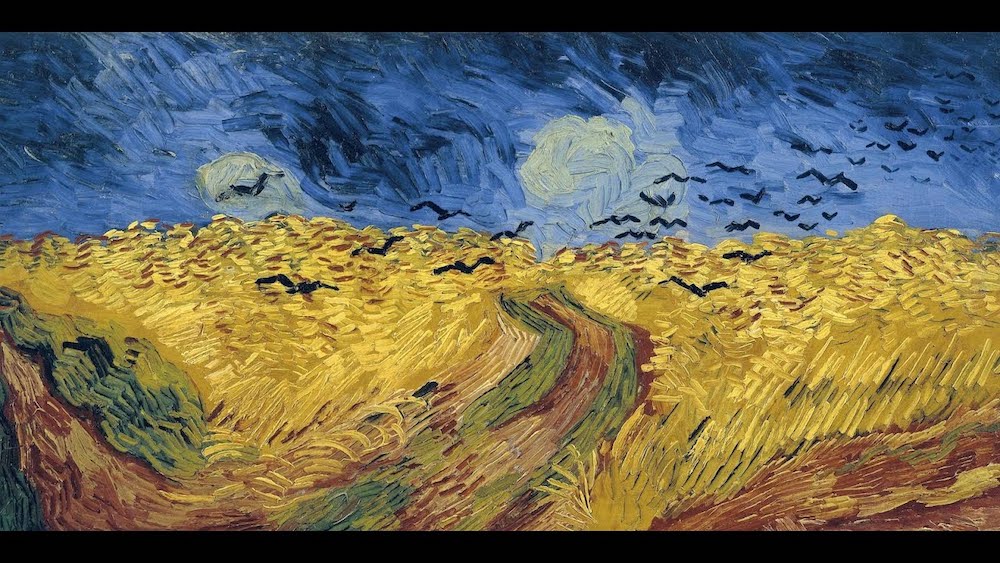
“Van Gogh in Auvers-sur-Oise: His final months” at the Van Gogh Museum in Amsterdam
12 May to 3 September
Okay, here’s the weird thing – if you want to see the most exciting Van Goghs, you have to go the Kröller-Müller Museum in Otterlo, Netherlands, or to the Museum of Modern Art in Manhattan. That will change in May when “Van Gogh in Auvers-sur-Oise: His final months” opens at the Van Gogh Museum in Amsterdam’s museum district.
“Van Gogh in Auvers-sur-Oise” is a rare opportunity to see more than 50 paintings and sketches by Vincent van Gogh that have never exhibited together, according to the museum website. The show is a collaboration between the Musée d’Orsay and the Van Gogh Museum and the exhibition moves to the d’Orsay later this year.
We’ve always found the Van Gogh Museum lacking, heavy with dark paintings of peasants from the artist’s time in Brabant, where his father was pastor of a church. But seeing some of his signature works from his period in Arles at the Kröller-Müller was haunting.
This show includes “Wheat Field with Crows” and other works painted during his final 70 days, which were spent at an asylum in the village of Auvers-sur-Oise outside Paris. Van Gogh’s most colorful and vibrant paintings have been scattered to the four winds – from Japan to private collections in the United States and who knows where, because they’ve disappeared to estates, private museums and yachts in Monaco and Dubai.
So, this is a must-see show.
Admission to the museum is 20 euros.

“Secessions: Klimt, Stuck, Lieberman” at the Nationalgalerie in Berlin
23 June thru 22 October
Thanks in part to the Helen Mirren/ Ryan Reynolds film “Woman in Gold,” Viennese painter Gustave Klimt is hot again and the Alta Nationalgalerie in Berlin has him this summer along with other artists in the Secessionist movement.
In collaboration with the Wien Museum, Klimt will be the focus of the exhibition with more than 50 works on display, including paintings by Franz von Stuck and Max Liebermann and the women artists of the Secession movement, including Dora Hitz and the hugely underrated German artist Käthe Kollwitz.
The compelling, contradictory Secessionists were radical forward-thinking artists who eschewed government support through royal academies and made a living the old fashioned way – off rich patrons. Klimt’s “Portrait of Adele Bloch-Bauer,” which was the subject of the movie, is one example. Sadly, it’s in New York (owned by Estée Lauder billionaire owner Ronald Lauder) and won’t be part of this exhibition, but you can see Klimt’s “Pallas Athene” (above).
Co-CEO of Dispatches Europe. A former military reporter, I'm a serial expat who has lived in France, Turkey, Germany and the Netherlands.


